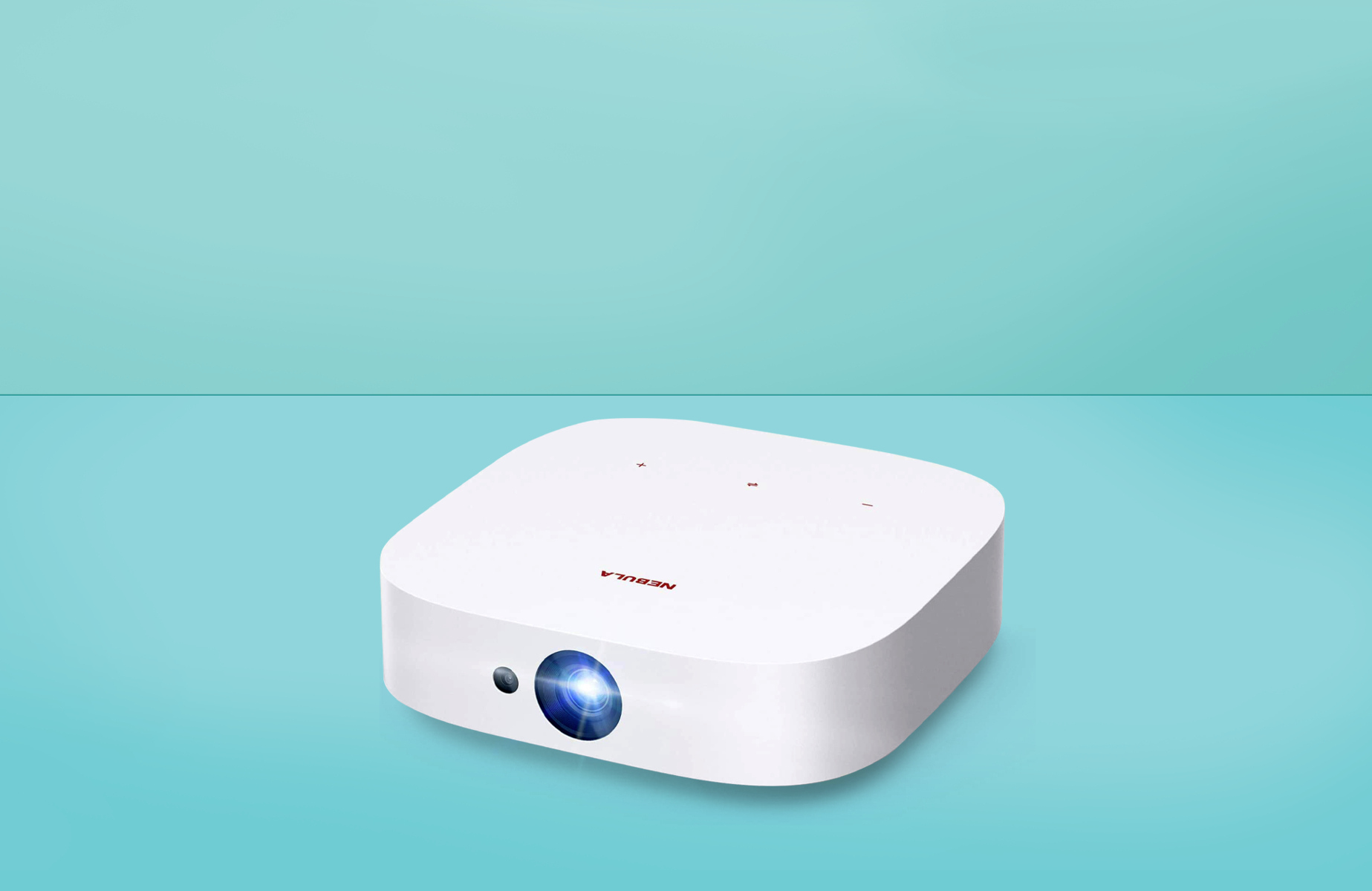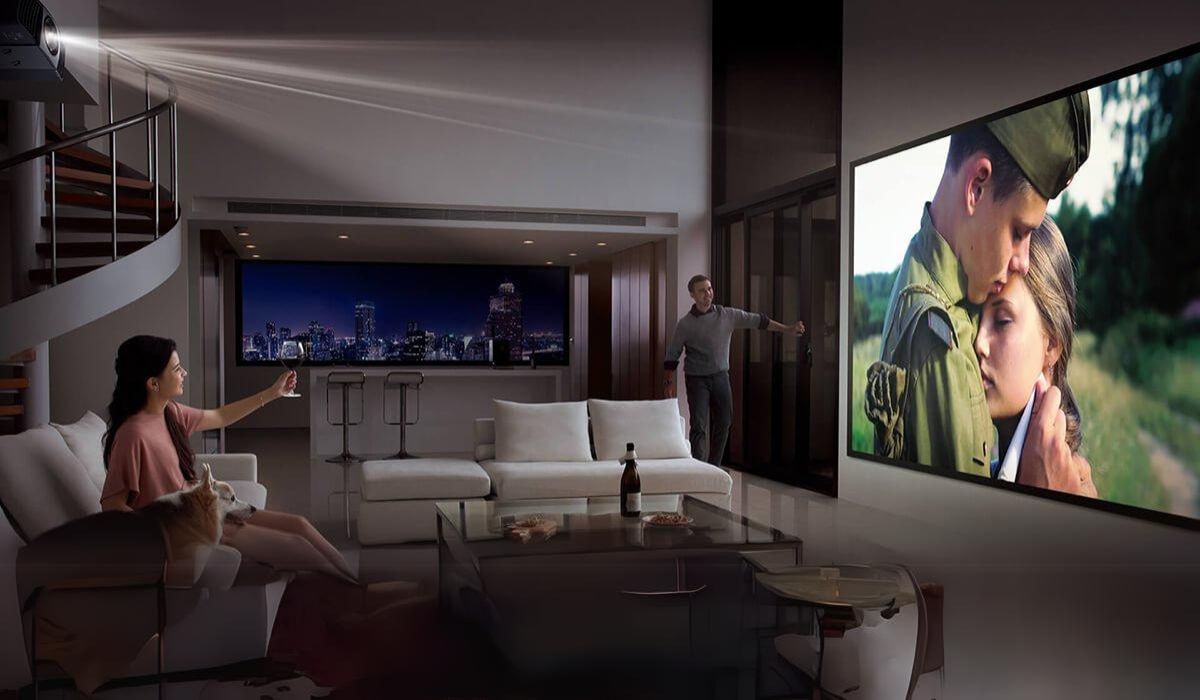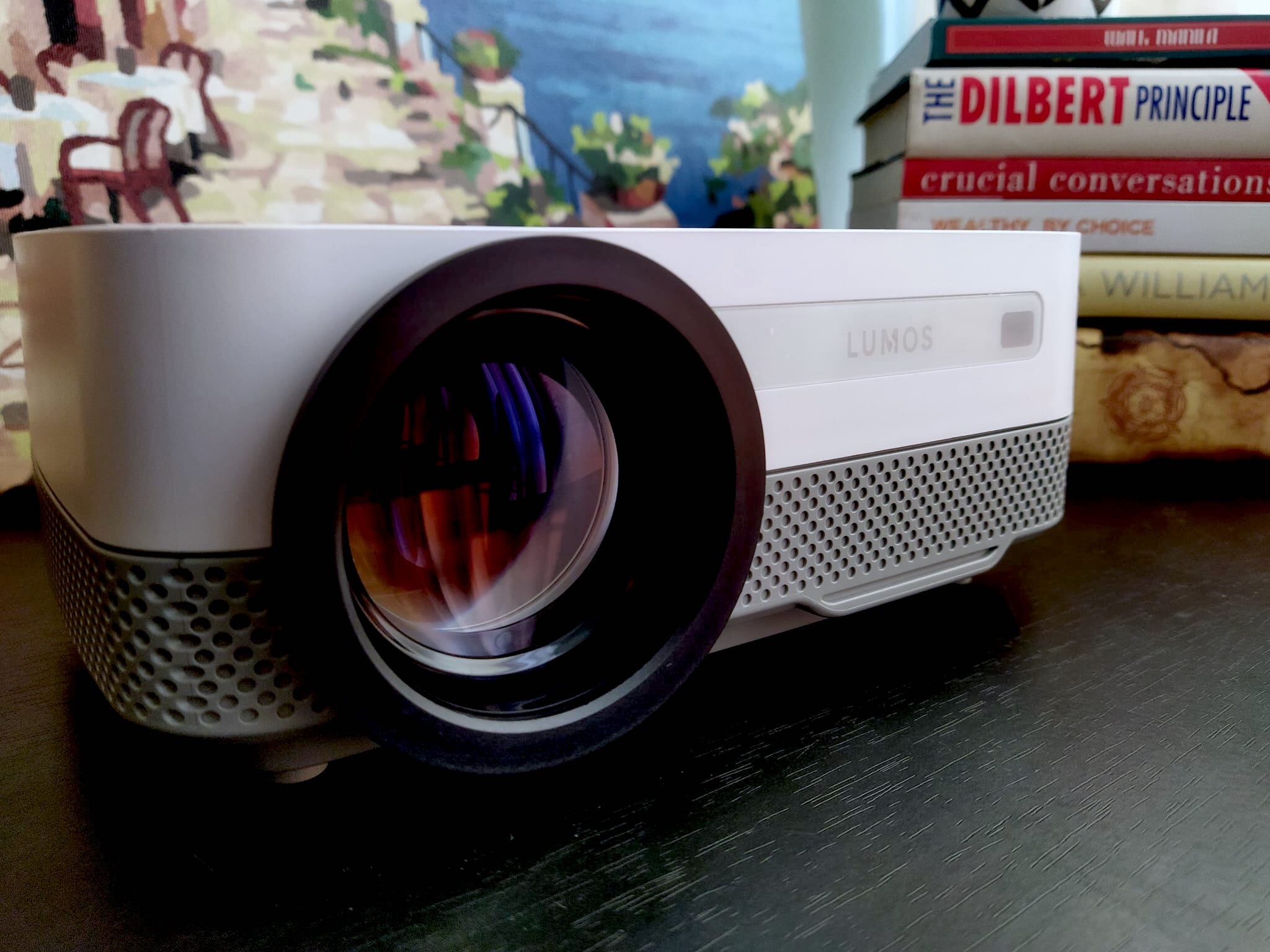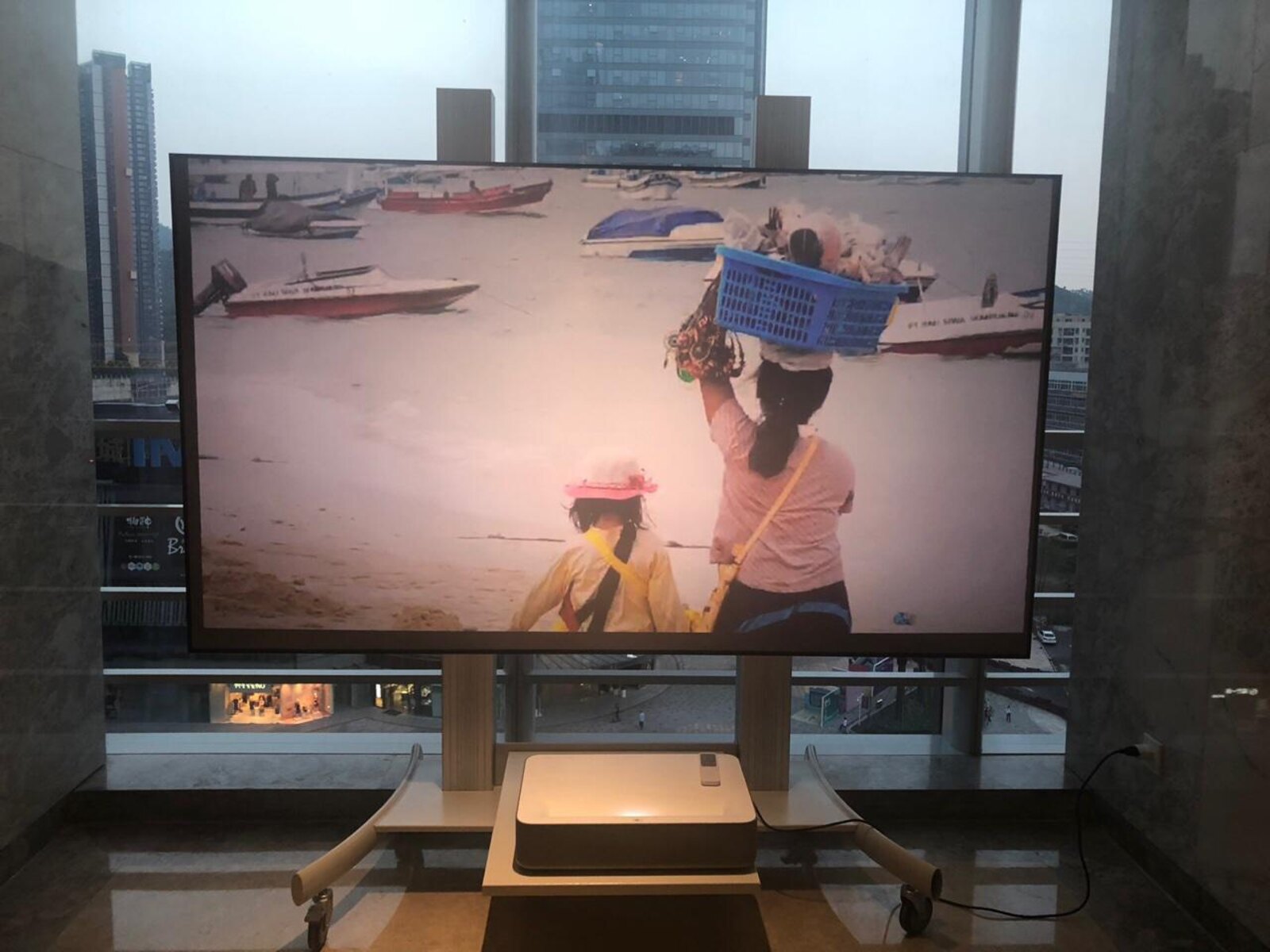Introduction
Welcome to the world of projectors, where visual experiences come to life. Whether you’re creating a cinema-like atmosphere in your living room, delivering impactful presentations in a boardroom, hosting outdoor movie nights, or immersing yourself in the world of gaming, projectors have become an integral part of our everyday lives. But with countless options available, how do you know which projector is the right fit for your needs?
One of the key factors to consider when selecting a projector is its lumen measurement. Lumen is the unit used to measure the brightness of a projector’s output. It determines how vivid and clear the projected image will appear in different environments. Understanding the importance of lumens and how they align with your specific requirements is crucial in making an informed decision.
In this article, we will explore the significance of lumen measurement in projectors and provide insights into determining the ideal lumens for various scenarios. Whether you’re setting up a home theater, conducting business presentations, organizing outdoor events, or indulging in gaming sessions, we’ve got you covered.
So, sit back, relax, and allow us to shed some light on the world of lumens and projectors, helping you make the best choice for your unique needs.
Why is Lumens Measurement Important for Projectors?
When it comes to projectors, lumens play a crucial role in defining the quality of the projected image. The lumen measurement determines the brightness level of the projector’s output, directly impacting the clarity, contrast, and overall visual experience. Understanding the importance of lumens will help you make an informed decision when selecting a projector for your specific needs.
One of the key reasons why lumens measurement is essential is to ensure that the projected image is properly visible in different environments. Higher lumen projectors are suitable for well-lit rooms or outdoor settings, where ambient light can adversely affect image quality. By choosing a projector with sufficient lumens, you can overcome the challenges posed by external lighting and enjoy a clear and vibrant display.
Another factor that makes lumens crucial is the size of the projection image. The larger the screen or projection area, the more lumens are required to maintain a bright and crisp image. Inadequate lumens can result in a dim and washed-out display, compromising the overall viewing experience.
Lumens also play a significant role in achieving optimum contrast. Higher lumens projectors offer better contrast, ensuring that dark scenes are displayed with depth and detail, while bright scenes appear vivid and dynamic. This is particularly important for home theater setups and gaming, where the visual impact is key to an immersive experience.
Additionally, lumens measurement is essential for ensuring visibility and legibility in business and educational environments. Presentations, charts, and graphs need to be clear and easily readable, even in well-lit conference rooms or lecture halls. By selecting a projector with appropriate lumens, you can ensure that your audience can see the content clearly, enhancing communication and engagement.
In summary, lumens measurement is crucial for projectors as it determines the brightness, visibility, contrast, and overall quality of the projected image. By understanding the importance of lumens, you can make an informed decision and choose the right projector that meets your specific needs, whether it’s for home entertainment, business presentations, outdoor events, or gaming.
Factors to Consider When Determining the Required Lumens
Choosing the right lumens for your projector involves considering several important factors. By evaluating these factors, you can determine the appropriate brightness level that will deliver an optimal viewing experience for your specific needs. Here are some key factors to consider:
1. Room Lighting: The amount of ambient light in the room is a crucial factor in selecting the required lumens. If you plan to use the projector in a dark or dimly lit room, you can opt for a lower lumen projector. On the other hand, if you anticipate significant ambient light, such as in a well-lit living room or outdoor setting, you will need a higher lumen projector to overcome the light interference and maintain a bright and clear image.
2. Screen Size: The size of the projection screen or area is directly proportional to the required lumens. Larger screens require more lumens to ensure a bright and evenly illuminated image. As a general guideline, for a 100-inch screen, you would need a projector with at least 1,500 to 2,000 lumens for optimal brightness and clarity.
3. Projection Distance: The distance between the projector and the screen also influences the required lumens. If you plan to place the projector further away, you may need a higher lumen unit to ensure sufficient brightness. Conversely, if you have a short throw projector with a close projection distance, you may be able to opt for a lower lumen model.
4. Content Type: The type of content you plan to project also affects the lumens requirement. For detailed graphics, high-quality videos, or gaming, you will need a projector with higher lumens to ensure vibrant colors and sharp image quality. On the other hand, if you primarily project text-based presentations or slides with minimal multimedia content, you may be able to work with a lower lumen projector.
5. Viewing Environment: Consider the specific viewing environment where the projector will be used. Factors such as the seating arrangement, the presence of reflective surfaces, and the level of visual distractions can impact your lumen selection. Take into account any unique characteristics of the viewing environment to ensure the projected image remains clear and visible.
By carefully evaluating these factors, you can determine the required lumens that will deliver the best visual experience for your projector setup. It’s essential to strike the right balance between brightness, clarity, and your specific viewing conditions to make the most out of your projector investment.
Types of Projector Environments and Their Lumens Requirements
Different projector environments have unique requirements when it comes to lumens. Understanding these requirements will help you choose the right projector with an appropriate brightness level for your specific setting. Let’s explore the lumens requirements for various projector environments:
1. Home Theater Projectors: Home theaters are often designed with controlled lighting conditions to create a cinematic experience. For a dedicated home theater room with complete light control, a projector with around 1,500 to 2,500 lumens is generally sufficient. This range ensures vibrant colors and optimal contrast, even in a dark viewing environment. However, if your home theater room allows some ambient light, you may want to consider a projector with higher lumens (up to 3,500 lumens) to maintain image quality.
2. Business and Educational Projectors: Projectors used for business presentations or educational environments face a variety of lighting conditions. The required lumens will depend on the size of the room, the level of ambient light, and the type of content being presented. Typically, projectors with 3,000 to 4,500 lumens are suitable for small meeting rooms or classrooms with controlled lighting. For larger spaces or rooms with high ambient light, consider projectors with 5,000 or more lumens to ensure clear visibility and legibility of the projected content.
3. Outdoor Projectors: Outdoor projections require projectors with higher lumens to combat the challenges posed by ambient light and the vast open space. The brightness needed depends on the time of day, weather conditions, and the size of the projection area. To ensure a vibrant and clear image, outdoor projectors typically have a minimum of 5,000 lumens, with some models reaching 10,000 lumens or more for large-scale events or venues.
4. Gaming Projectors: Gaming enthusiasts often seek an immersive experience with vibrant visuals and fast response times. When it comes to gaming projectors, consider models with at least 3,000 to 4,500 lumens. This ensures a bright and detailed display, allowing you to fully enjoy the graphics, colors, and action-packed scenes. Additionally, projectors with high refresh rates and low input lag are recommended for a smooth gaming experience.
Remember that these lumens requirements are general guidelines and can vary based on specific room characteristics, personal preferences, and the level of brightness desired. It’s always a good idea to consult the manufacturer’s recommendations or seek expert advice to ensure you choose the right projector with the appropriate lumens for your specific environment.
Home Theater Projectors
Creating a cinematic experience in the comfort of your own home is a dream come true for many movie enthusiasts. When it comes to home theater projectors, finding the right balance between resolution, image quality, and lumens is crucial to achieving that immersive movie theater feel. Let’s explore some key considerations for choosing a home theater projector:
Lumens Requirements: In a dedicated home theater room with controlled lighting conditions, a projector with approximately 1,500 to 2,500 lumens is usually sufficient. This range ensures a bright and vibrant image, even in a dark viewing environment. However, if your home theater room allows some ambient light from windows or other sources, it’s advisable to select a projector with higher lumens (up to 3,500 lumens) to maintain image quality.
Resolution and Image Quality: Home theater projectors usually offer high-resolution options such as Full HD (1080p) or even 4K Ultra HD for an incredibly sharp and detailed image. Opting for a higher resolution ensures a more immersive viewing experience, especially when paired with high-quality projection screens. In addition to resolution, look for projectors with advanced image processing technologies such as HDR (High Dynamic Range) for enhanced color contrast and clarity.
Contrast Ratio: Contrast ratio is an essential factor in home theater projectors, as it affects the depth and richness of the displayed images. A higher contrast ratio, such as 10,000:1 or higher, ensures deep blacks, bright whites, and good shadow detail, resulting in a more dynamic and lifelike image.
Throw Distance: Consider the available space in your home theater room and the desired screen size when choosing a projector. Some projectors offer adjustable zoom and lens shift features, allowing you to achieve the desired screen size without compromising image quality. A short-throw projector can also be beneficial in smaller spaces, as it can project a larger image from a shorter distance.
Sound System: While projectors primarily focus on delivering stunning visuals, audio is a vital component of the home theater experience. Some projectors include built-in speakers, but for a truly immersive and cinematic experience, consider investing in a separate surround sound system or connecting the projector to an audio receiver.
Connectivity Options: Ensure that the projector offers various connectivity options to connect your preferred devices, such as Blu-ray players, gaming consoles, or streaming devices. HDMI, USB, and Wi-Fi capability are common connectivity features to look for.
By considering these factors, you can select a home theater projector that meets your specific needs and delivers the ultimate movie-watching experience in the comfort of your own home. Remember to take into account the size and layout of your home theater room, as well as your personal preferences for resolution, lumens, and audio quality, to make the best choice for your cinematic enjoyment.
Business and Educational Projectors
Projectors play a vital role in business and educational settings, providing an effective way to deliver presentations, lectures, and training sessions. When selecting a projector for these environments, it’s important to consider factors such as brightness, resolution, connectivity options, and ease of use. Let’s explore the key considerations for business and educational projectors:
Lumens Requirements: The required lumens for business and educational projectors depend on the size of the room, the level of ambient light, and the type of content being presented. For small meeting rooms or classrooms with controlled lighting, projectors with 3,000 to 4,500 lumens are generally suitable. These projectors provide bright and clear visuals, ensuring that text, charts, and multimedia content are easily visible to all attendees. For larger spaces or rooms with high ambient light, consider projectors with 5,000 or more lumens to maintain optimal visibility.
Resolution and Image Quality: Business and educational projectors often require a high-resolution output to ensure crisp and detailed presentations. Full HD (1080p) or even higher resolutions can help display small text, intricate diagrams, and high-quality images with clarity. Additionally, projectors with advanced image enhancement technologies, such as keystone correction and color management, can further improve the image quality.
Connectivity Options: Consider the connectivity options offered by the projector, as it should be compatible with the devices you frequently use for presentations. HDMI, VGA, and USB ports are commonly utilized for connecting laptops, tablets, and other peripherals. Wireless connectivity is also beneficial, allowing for easy screen sharing and collaboration.
Ease of Use: User-friendly features can significantly enhance the usability of business and educational projectors. Look for projectors with intuitive menus, easy-to-adjust settings, and quick setup options. Remote control functionality, including the ability to control the projector from a mobile app, can also simplify the operation.
Long Lamp Life: Business and educational environments often involve frequent projector usage. Therefore, choosing a projector with a long lamp life is beneficial to reduce maintenance and replacement costs. Projectors with extended lamp life, typically ranging from 3,000 to 5,000 hours or more, are ideal for these settings.
Portability: Depending on your needs, portability may be a crucial factor. If you frequently move between different rooms or locations, lightweight and compact projectors with convenient carrying cases can be advantageous. Portable projectors offer flexibility and ease of transport, allowing you to set up presentations quickly and efficiently.
By considering these factors, you can select a business or educational projector that meets your specific requirements. Whether you’re delivering a professional presentation or engaging students in a classroom, a well-chosen projector can enhance communication and ensure that your content is conveyed effectively.
Outdoor Projectors
Outdoor projections offer a unique and immersive entertainment experience, whether it’s hosting movie nights under the stars or organizing dynamic visual displays for events. When it comes to outdoor projectors, there are specific considerations to ensure optimal visibility and image quality in open-air environments. Let’s explore the key factors to consider for outdoor projectors:
Lumens Requirements: Outdoor settings often introduce challenges with ambient light, making higher lumens essential to combat the brightness from surrounding sources. The required lumens for outdoor projectors depend on factors such as the time of day, weather conditions, and the size of the projection area. As a general guideline, outdoor projectors should have a minimum of 5,000 lumens to deliver a bright and clear display. For larger-scale events or venues, projectors with 10,000 lumens or more may be necessary to maintain visibility.
Weather Resistance: As outdoor projectors are exposed to the elements, it’s important to choose models that have built-in weather resistance features. Look for projectors with dustproof and waterproof designs, as well as sealed optical systems to protect against moisture and debris. This ensures the durability and longevity of the projector, even in challenging weather conditions.
Screen Size and Placement: Consider the size of the projection area and the optimal placement of the projector. Outdoor projections often allow for larger screen sizes, and accordingly, the brightness requirements will increase as well. To achieve the desired screen size, you may need to position the projector further away from the screen, which could influence the choice of projector with higher lumens and adjustable zoom capabilities.
Portability: Outdoor activities often involve transporting projectors to various locations. Look for portable projectors that are lightweight, compact, and designed with convenient carrying handles or cases. This makes it easier to set up outdoor projections and ensures flexibility in organizing events in different places.
Connectivity and Power Options: Ensure that the projector offers various connectivity options to connect your preferred media devices, such as laptops, streaming devices, or USB drives. Additionally, outdoor projectors should have flexibility in power sources, such as being compatible with battery-operated or solar-powered setups, to allow for versatility and ease of use in outdoor environments.
Projection Surface Considerations: The choice of projection surface is crucial for outdoor projections. A high-quality outdoor projection screen or a smooth, white wall can provide a better display surface compared to a makeshift or uneven surface. Consider factors such as screen size, portability, and setup requirements when selecting the appropriate projection surface for your outdoor events.
By considering these factors, you can select an outdoor projector that provides the brightness, durability, and flexibility needed for vibrant and enjoyable outdoor projections. With the right equipment, you can create memorable experiences and captivate your audience with stunning visuals in the open air.
Gaming Projectors
Gaming enthusiasts are constantly seeking new ways to immerse themselves in their favorite digital adventures. Gaming projectors provide a larger-than-life gaming experience, offering captivating visuals and an immersive gameplay environment. When it comes to gaming projectors, there are several factors to consider to ensure optimal performance and an enjoyable gaming experience. Let’s delve into the key considerations for gaming projectors:
Lumens Requirements: Gaming projectors require a balance of brightness and image quality to bring games to life. For a gaming projector, consider models with at least 3,000 to 4,500 lumens. This ensures a bright and vibrant display, allowing you to fully appreciate the graphics, colors, and action-packed scenes in your games. Additionally, look for projectors with high contrast ratios to deliver deep blacks and bright whites, enhancing the overall visual experience.
Resolution and Refresh Rate: High-resolution gaming projectors, such as Full HD (1080p) or 4K Ultra HD, provide sharp and detailed visuals, enhancing your gaming experience. Opting for a higher resolution projector allows you to appreciate the intricate details in the game’s graphics. Moreover, consider the refresh rate of the projector, with higher refresh rates (120Hz or more) reducing motion blur and delivering smoother gameplay.
Input Lag: Input lag, the delay between a controller input and the corresponding action on the screen, is a critical factor in gaming projectors. Low input lag is crucial for a responsive and immersive gaming experience. Look for projectors with minimal input lag (usually 30 milliseconds or less), ensuring that your actions are accurately and swiftly reflected in the game.
Game Mode and Color Accuracy: Many gaming projectors offer a dedicated Game Mode or Picture Mode optimized for gaming, reducing input lag and enhancing colors and contrast specifically for gaming purposes. Additionally, projectors with accurate color reproduction (e.g., Rec. 709 color gamut) ensure that the visuals are displayed as intended by game developers, resulting in a more immersive gaming experience.
Connectivity and Audio: Consider the connectivity options provided by the gaming projector, ensuring compatibility with your gaming console or PC. HDMI ports are essential for connecting gaming devices, while additional connectivity options like USB or Bluetooth can be convenient for connecting controllers, speakers, or headphones. Note that while some projectors may have built-in speakers, connecting external gaming speakers or a sound system can enhance the audio experience for immersive gameplay.
Screen Size and Projection Distance: Gaming projectors offer flexibility in screen size, allowing you to create a truly cinematic gaming experience. Consider the available space and desired screen size to determine the optimal projector placement and projection distance. It’s important to find the right balance, as larger screens require more lumens to maintain brightness across the entire image.
By considering these factors, you can choose a gaming projector that meets your specific requirements and elevates your gaming experience to new heights. Whether you’re exploring vast virtual worlds or engaging in intense multiplayer battles, a gaming projector offers a larger-than-life display that enhances immersion and brings your games to life.
How to Calculate the Ideal Lumens for Your Projector
Calculating the ideal lumens for your projector involves considering various factors that affect the brightness requirements in your specific setup. By following these steps, you can determine the appropriate lumen output for a clear and vibrant projected image:
1. Determine the Ambient Light Conditions: Evaluate the lighting conditions in the room or outdoor space where the projector will be used. Take note of the amount of natural or artificial light that may interfere with the projected image. If there are windows or other light sources that cannot be fully blocked, you may need a projector with higher lumens to overcome the ambient light.
2. Measure the Projection Distance: Determine the distance between the projector and the projection surface. This will help determine the required brightness level based on the throw distance. Keep in mind that as the projection distance increases, the lumens should also increase to maintain a bright and clear image.
3. Determine the Screen Size: Consider the desired screen size for your projection setup. Larger screens require higher lumens to ensure a bright and evenly illuminated image. As a general rule, for a 100-inch screen, a projector with 1,500 to 2,000 lumens is recommended. Adjust the lumen requirement accordingly if you have a larger or smaller screen size.
4. Consider the Content Type: Think about the type of content you will be projecting. If you primarily project movies, videos, or games that require vibrant colors and sharp details, you may need a projector with higher lumens. However, if your content consists mostly of text-based presentations or slides with minimal multimedia elements, you may be able to work with a lower lumen projector.
5. Choose the Projection Surface: The choice of projection surface can impact the brightness requirements. A high-quality projection screen, specifically designed for optimal reflectivity and image quality, can enhance the brightness of the projected image. Alternatively, a smooth and neutral-colored wall can also serve as a suitable projection surface.
6. Consult Manufacturer Recommendations: Check the manufacturer’s specifications and recommendations for the projector model you are considering. They often provide guidelines on the ideal lumens based on the projection distance, screen size, and usage environment.
7. Seek Expert Advice: If you are uncertain about calculating the ideal lumens for your projector or have specific requirements, consider consulting with professionals or experts in the field of audiovisual technology. They can provide personalized recommendations based on your unique setup and preferences.
By following these steps and considering the specific factors mentioned, you can determine the ideal lumens for your projector and ensure a visually stunning experience that meets your specific requirements.
Tips for Buying a Projector Based on Lumens
When purchasing a projector, the lumen measurement plays a vital role in ensuring the quality and visibility of the projected image. To make an informed decision and choose a projector based on lumens, consider the following tips:
1. Understand Your Specific Requirements: Determine the purpose of the projector and the environment in which it will be used. Consider factors such as the room size, ambient lighting conditions, desired image size, and content type. This will help you estimate the required lumens for your projector, ensuring optimal visibility and image quality.
2. Research Projector Applications: Different projectors are designed for specific applications, such as home theater, business presentations, outdoor events, or gaming. Each application has unique lumens requirements. Research projectors tailored to your intended use to find models that offer sufficient brightness for your needs.
3. Consider Room Lighting: Evaluate the lighting conditions in the room where the projector will be used. If there is significant ambient light that cannot be controlled, opt for a projector with higher lumens to compensate for the brightness interference and ensure a clear and vibrant image.
4. Pay Attention to Projection Surface: The quality and reflectivity of the projection surface can impact the perceived brightness of the projected image. A high-quality projection screen will enhance the image’s brightness and contrast. Consider investing in a projection screen specifically designed for optimal image reflection.
5. Choose the Right Image Size: Determine the desired screen size for your projection setup. Larger screen sizes generally require higher lumens to maintain a bright and evenly lit image. Be sure to factor this into your lumens calculation and choose a projector that can handle your preferred screen size.
6. Check Manufacturer Recommendations: Review the manufacturer’s specifications and recommendations for the projectors you are considering. Manufacturers often provide guidelines on the ideal lumens based on the intended usage environment, screen size, and projection distance.
7. Consider Future Uses: Think about potential future uses for the projector. If you anticipate using it in different environments or for various applications, consider a projector with adjustable brightness settings or a range of lumens options. This will allow you to flexibly adapt the brightness to different lighting conditions and usage scenarios.
8. Set a Realistic Budget: Lumens can affect the pricing of projectors. Set a budget range that aligns with your requirements, balancing the desired brightness level and other important features. Consider the long-term value and durability of the projector when making your purchasing decision.
9. Read Reviews and Seek Expert Advice: Take the time to read customer reviews and professional expertise on different projector models. Their experiences and insights can help you make an informed decision based on real-world user feedback.
By following these tips, you can navigate the process of buying a projector based on lumens and find the perfect balance between brightness, image quality, and your specific viewing requirements.
Conclusion
Choosing the right projector based on lumens is an essential consideration for ensuring optimal visibility, image quality, and an enjoyable viewing experience. By understanding the importance of lumens and considering factors such as room lighting, screen size, content type, and usage environment, you can select a projector that meets your specific needs.
For home theater setups, selecting a projector with appropriate lumens, resolution, and contrast ratio can create a cinematic atmosphere, bringing your favorite movies and shows to life. In business and educational settings, projectors with sufficient lumens, connectivity options, and ease of use enhance presentations and engage audiences effectively.
Outdoor projectors with higher lumens are necessary to combat the challenges posed by ambient light and to display crisp, vibrant images in open-air environments. Gaming projectors with appropriate lumens, resolution, refresh rate, and low input lag deliver an immersive gaming experience.
Calculating the ideal lumens for your projector involves considering factors such as ambient light, projection distance, screen size, content type, and projection surface. Consulting manufacturer recommendations and seeking expert advice can further assist in choosing the right brightness level for your specific setup.
When purchasing a projector based on lumens, it’s important to understand your requirements, research projector applications, consider room lighting and projection surface, choose the appropriate image size, and set a realistic budget. Reading reviews and seeking expert advice can offer valuable insights for making an informed decision.
By taking these factors into account and following these tips, you can find the perfect balance between lumens, image quality, and usability for your projector needs. Whether you’re creating a home theater, delivering professional presentations, organizing outdoor events, or engaging in immersive gaming sessions, a well-chosen projector will elevate your visual experience and provide hours of enjoyment.

























